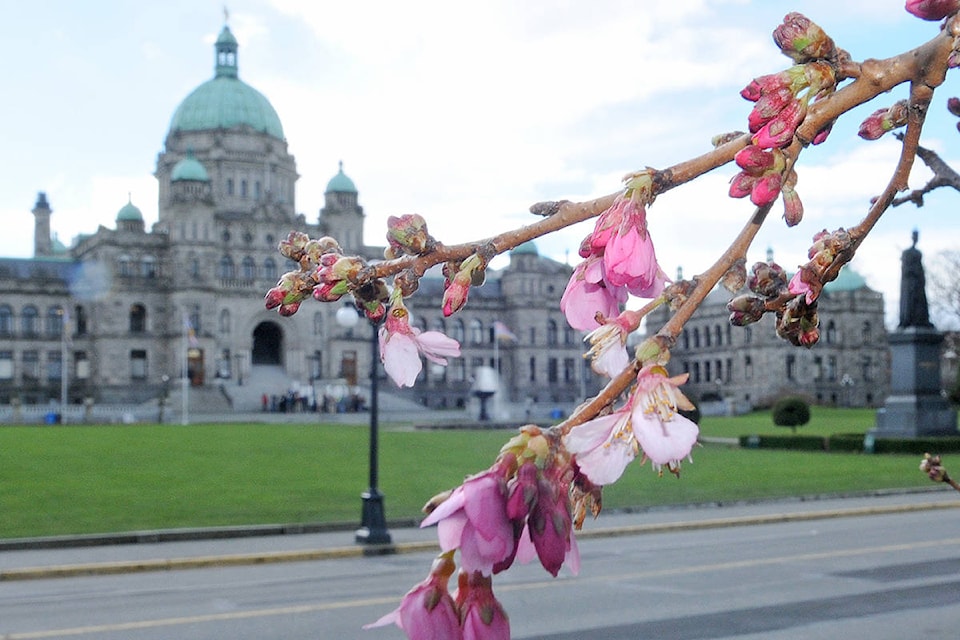The City of Victoria is not looking to remove cherry or plum blossom trees, said Coun. Laurel Collins.
The statement comes after council’s recent decision to commit $858,000 to the Urban Forest Master Plan, which aims to expand the city’s canopy coverage and encourage the growth of native plants and trees.
During discussion about this funding, Coun. Geoff Young alluded to a previously-approved policy to replace the blossoming trees.
“The council has already adopted the explicit policy of the destruction of those landscapes, ” Young said. “We have adopted the policy of not replacing those trees but rather replacing them with native trees.”
READ MORE: Cherry trees in Victoria to be replaced with native species
Young’s comments were supported by Director of Parks, Recreation and Facilities Thomas Soulliere, who noted that non-native plants were “suffering” due to climate change issues.
News of this decision deeply offended the Victoria Nikkei Cultural Society (VNCS), which represents Japanese cultural heritage in the community.
“We are of course opposed to this plan to gradually replace these cherry trees, they are such an iconic part of the City of Victoria,” said Tsugio Kurushima, president of the VNCS. “Our community has a heritage connection to the cherry trees because back in 1937 the Japanese Victoria community donated over 1,000 cherry trees to the city.”
ALSO READ: Cherry blossoms are blooming early in Victoria
At that time, the Japanese community won a float competition in the city’s 75th anniversary parade, and used the $300 prize money to gift the trees to the city. The city park superintendent at the time concluded that cherry trees were a better choice than the native trees for urban areas, as their roots are less aggressive and unlikely to buckle the sidewalks.
This week Kurishima consulted with tree biology experts about the viability of ornamental blossoming trees in Victoria, including Patrick von Aderkas, a professor at the University of Victoria’s Centre for Forest Biology.
“No one has studied the effects of climate change on urban species,” von Aderkas said. “The result is that it cheapens the debate on climate change to argue that native trees are better adapted than non-native. I’ve studied native trees and they’ve got problems coming up.”
von Aderkas noted that so far, the only global trend people have noticed with blossoming trees is a tendency to bloom earlier.
“I don’t think that constitutes maladaptation,” von Aderkas said.
For Kurushima, the lack of scientific evidence against cherry blossoms added to the insult.
“We were never consulted about the heritage aspect, and now we find out that the rationale and basis for this plan is suspect,” Kurushima said. “We’re not opposed to them wanting to restore native plants, but I think native and non-native can coexist.”
ALSO READ: Annual fair brings all things Japanese to Esquimalt
Collins emphasized that the city is not looking to replace all ornamental blossoming trees unless no other option will work.
“We are not cutting down cherry trees, and the Urban Forest Master Plan is not trying to replace cherry trees… we are really just being attentive to trees that are going to thrive,” Collins said. “Cherry blossom trees are not going to be good for all locations, but we will continue to plant cherry trees that will do well in the street landscape.”
Collins noted that in the past two years, the City has planted 20 new flowering cherry trees and 20 new flowering plum trees.
This Thursday Collins and Coun. Jeremy Loveday hope to put forward a motion to clarify the city policy, and to write a letter to the VNCS to acknowledge the cultural importance of the trees.
